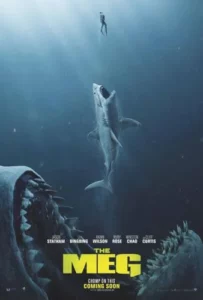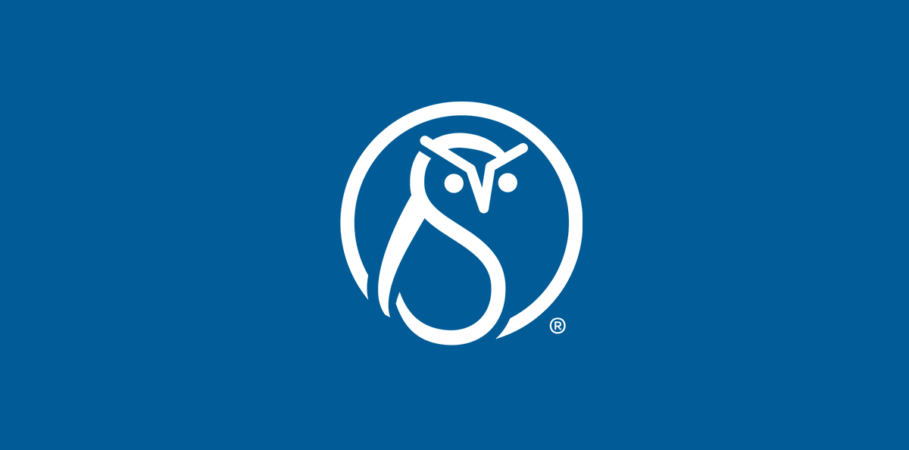Wrangling the Meg of learning content
Content is a fierce beast to wrangle. I’ve experienced this after years of managing marketing content. Writing engaging, high-quality, accurate content — whether it’s from scratch or using AI as a starting place — is hard. Pile on revisions, production schedules, publishing tools, industry changes, and more, and you create a massive, wild creature.
If marketing content is a great white shark, learning content is the megalodon.
Most companies produce a lot of marketing content, but this pales in comparison to the volume of learning content. The operational challenges you experience with marketing content are exponentially enlarged when you consider the volume of learning content.
Movie poster for “The Meg,” 2018, property of Warner Brothers Pictures.
Unless you’re Jason Statham, your organization’s learning content is going to be impossible to wrangle without lots of strategic planning.
Start with strategy
When we use the term “content strategy,” we’re talking about a holistic approach to planning, organizing, and connecting your content across departments.
Creating a content strategy is challenging. It takes time, coordination, and a future-focused mindset. Teams don’t feel they have the capacity to plan for the future when they’re stuck wrestling current obstacles. It’s tempting to skip past strategy and kick-start immediate solutions.
However, before you jump into finding new tools or implementing systems for managing your learning content, you need a content strategy. It ensures your decision-making is focused on meeting your long-term goals and building success for your team and organization.
“However, before you jump into finding new tools or implementing systems for managing your learning content, you need a content strategy. It ensures your decision-making is focused on meeting your long-term goals and building success for your team and organization.”
— Christine Cuellar
How do you create a content strategy? Of course, you can give content experts like us a call (which we love), but here’s where you can start right now.
“Evaluating your current learning content is a good first step in determining how to handle it going forward.
What kind of learning content do you have? Some types we typically see:
- Educational curriculum materials, such as textbooks or published research
- Supplemental materials for instructors, such as presentations, activities, or assessments
- Instructions or tutorials that help customers use your products
- Materials for onboarding or training new employees
Your company might produce multiple kinds of learning content for different purposes. If this is the case, does any of this content get higher priority (for example, customer-facing content over internal-facing content)?”
— Gretyl Kinsey, Developing a content strategy for your learning content
Unique challenges of learning content
Since your content strategy needs to encompass all types of content your organization produces, the nuances of each type of content have to be accounted for. These are some of the challenges we’ve encountered with learning content:
- PowerPoint: PowerPoint slides are notoriously difficult to manage for consistency and reuse. Though you may be able to make them look pretty, the cons may outweigh the pros if you’re trying to build scalable content operations.
- SCORM and LMS issues: SCORM is a standardized method for exchanging content between training platforms, but many LMSs require a particular “flavor” of SCORM.
- Complexity of learning content vs. other topics: Learning content requires real-time adaptations from instructors (and oftentimes students) instead of being ready-to-read like marketing or technical content.
- High volume of learning content: As we Meg-tioned earlier, the amount of learning content organizations have to produce is massive.
“The most unique challenge with learning content is getting your arms around the sheer scope of information that’s required.”
— Bill Swallow, Optimize learning and training content through content operations
Optimize content operations
Without streamlined content processes, organizations often encounter pain points like these.
“What we’re hearing from the people that are talking to us about learning content is, ‘I have a How to log in lesson, but I have 10 or 20 copies of it because they’re all stashed in different systems and I have no way of actually managing them. I have to make a copy to make a version for the teller, database admin, and so on. I can’t share or link them.”
— Sarah O’Keefe, Content operations for elearning content
“If a company is looking to implement something within a specific time frame for a very specific business need and that gets delayed at the beginning when training is being developed, it’s going to snowball down. Your six-week delay in getting content out the door might turn into a six-month delay in getting the program rolled out.”
— Bill Swallow, Optimize learning and training content through content operations
Optimizing your content operations lightens your content team’s production workload so they can focus on writing and managing great learning content. This also allows your organization to move swiftly when large programs or business initiatives come up.
The best place to start optimizing your content operations is by evaluating your current processes. If possible, get input from team members across multiple departments to capture the full scope of your needs. Identify pain points, stuck points, or places where content processes are breaking down. Start a list of the functionality your team needs for authoring and publishing tools. This will help you evaluate new tools more effectively.
Our content ops manifesto walks you through four critical steps for optimizing content operations:
- Semantic content: This is the foundation of your content operations that we build by creating tags, metadata, sequencing, and hierarchy.
- Reduce friction: Use content and translation management systems and automated rendering engines to eliminate wasteful operational gaps.
- Emphasize availability: Focus on making your learning content accessible, and provide a variety of delivery options.
- Plan for change: Prioritize flexibility with your people and processes, and establish performance metrics.
DITA Learning & Training specialization
The topic of managing content typically brings us back to DITA, one of our favorite content structures.
If you’re not familiar with DITA, we’ve authored several articles to help you understand what DITA is and how it can be used to manage learning content. We’ve also created free, self-paced training with our site LearningDITA.com, where you can learn more about what DITA is and how to use it for structuring content.
Organizations that have a DITA structure in place are able to use the DITA Learning and Training specialization (L&T) to create flexible and scalable processes that address the unique challenges of learning content. We have an in-depth course that covers L&T on LearningDITA.com!
“The L&T allows for information to be reused among different learning content materials. Content creators can directly reference source information in a presentation or assessment. For example, you can write a term definition, modify it in the source content as a glossary term, and then pull it into a test question as the correct answer option.”
— Scriptorium Tech, Flexible learning content with the DITA Learning and Training specialization
Don’t drown while wrangling the Meg. Connect with our team of experts to create a content strategy.
"*" indicates required fields






